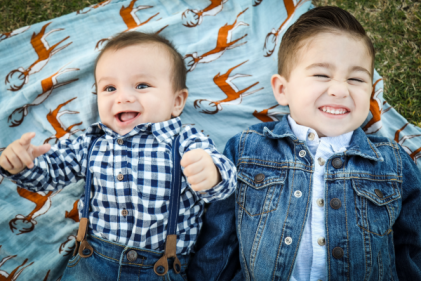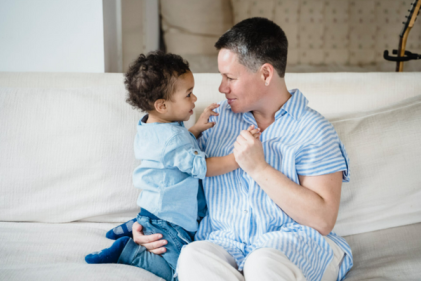Potty training is a daunting concept for many parents – particularly if you’ve never done it before! However, there are a few simple ways to make it easier for you, and for your child.
1. Assess your readiness – and your child’s
Trying to begin potty training before your child is ready is an exercise in futility. However, while most parents start trying to potty train their child from about 30 months, some children aren’t ready until they’re three, or even four years old!
Look for signs that your child is ready to start, like increased independence, and a dislike of wearing a dirty nappy, but also consider environmental and circumstantial factors, like a new baby, or moving house. When there’s instability in your child’s life, it’s unlikely to be the best time to start potty training.
You also need to choose a time when you and your partner have the time and energy to start potty training. If you’re under pressure at work or at home, or you are coping with a new baby, it may be better to leave it for a while before you start.
2. Equip yourselves
Before you can begin potty training, you will need a potty, or a child sized toilet seat adapter. If you do choose a seat that fits on the grown up toilet, get a stool too, so your child’s feet can be flat on the ‘floor’ rather than dangling in the air. You also want to get the right kind of potty – look for a portable model that has a detachable urine guard, if any. This can make potty training boys a lot easier.
3. Create a schedule
Having a potty training schedule is a good idea. At first, this can consist of letting your child sit, fully clothed, on the potty at several times during the day. This will help to acclimatise your child to using the potty later on.
Once your child is happy to sit on the potty with his or her clothes on, do the same thing with your child’s pants and nappy off. Take your child with you to the bathroom when you go, so that he or she can see that you do the same thing when you go to the toilet. If at any point, your child does not seem comfortable, rather leave it and try again later.
4. Show – don’t tell
One of the best ways to get your child to understand the idea of using the potty (or toilet) is to let him or her see you go to the toilet. Show him or her how you take your pants and underwear off, wipe, and flush. You may find that your child develops an interest in sitting on the toilet now – let them, as it’s a good learning experience, even if it doesn’t work at first!
5. Gather information
Telling your child about potty training is another way to make the process easier. Using books and stories about using the toilet are another good idea. Try keeping these kinds of books in the bathroom, and let your child read about the steps as he or she attempts to use the potty.
6. Encourage your child
It may seem like nagging, but young children can often ‘forget’ that they need to use the potty. Make a point of encouraging your child to use the potty, or reminding him or her gently by asking if he or she needs to go. You could also let your child play without a nappy, in the vicinity of the potty, and look out for signs that he or she needs to go, such as swaying or rocking, or grabbing him or herself.
Make sure that you celebrate every ‘victory.’ If you praise your child every time he or she uses the potty successfully, he or she will be more likely to want to remember to use it next time.
7. Keep training pants on hand
When your child is potty training, it’s easier to use training pants - that you can pull up and down, but that still protect against accidents - than it is to use underwear, and have to deal with the inevitable accidents. Phase training pants in gradually, and keep using nappies at night, at least until your child has mastered bladder and bowel control during the day!
8. Accept that accidents are inevitable
When you start potty training, you need to accept that there will be accidents. Getting angry, or punishing your child is counter productive, and will probably set back any progress your child has made. Simply take it in your stride, clean up the mess, and remind your child gently that next time, he or she needs to use the potty instead.
9. Get ready for nights!
Once your child is staying dry, and using the potty most of the time - without incident or accident -then it’s time to start night training. Continue using training pants at night, but encourage your child to use the potty during the night if he or she needs to. A mattress protector is a good idea, and once your child is staying dry for five or more nights in a row, then it’s time to try real underwear to bed. Keep bedtime liquids to a minimum, and hope for the best!
10. Celebrate!
It may seem hard to believe now, but there will come a time when your child can stay dry all day, and all night. When that day comes, and it will, it’s time to celebrate, because your job of potty training is finally over!











